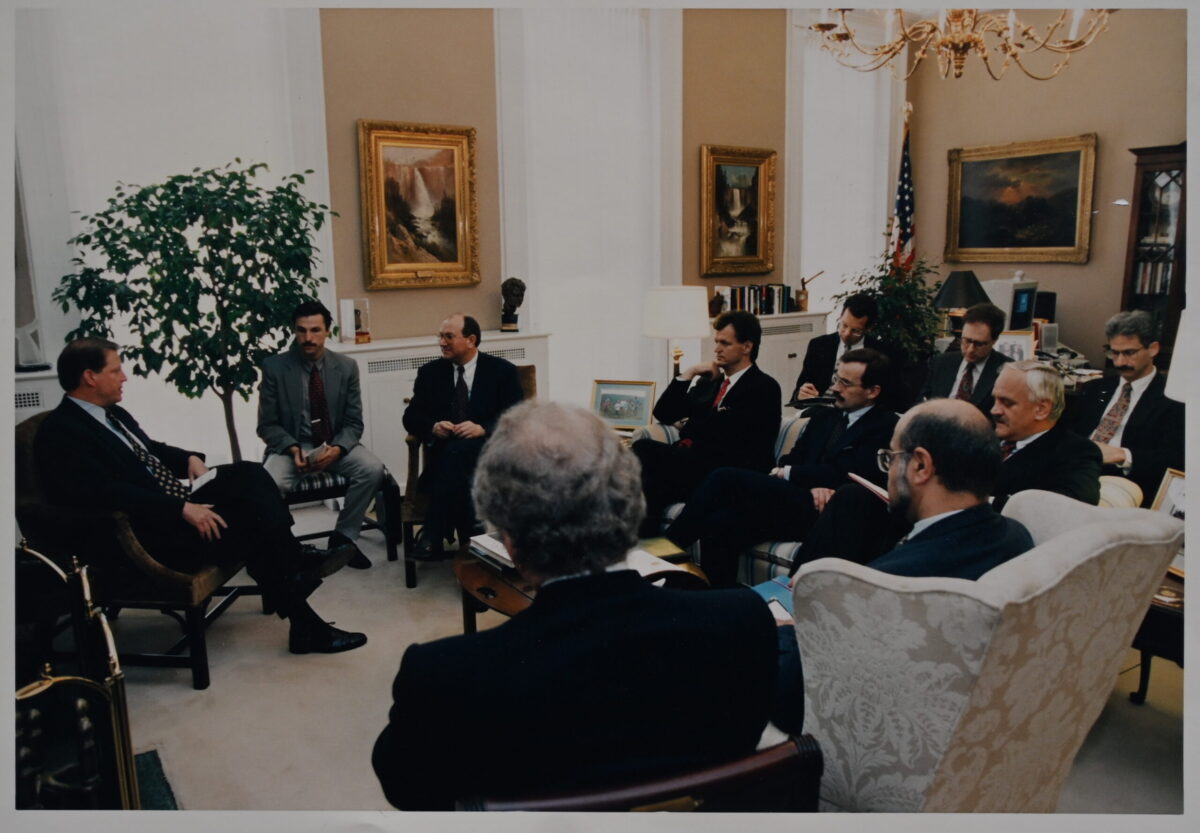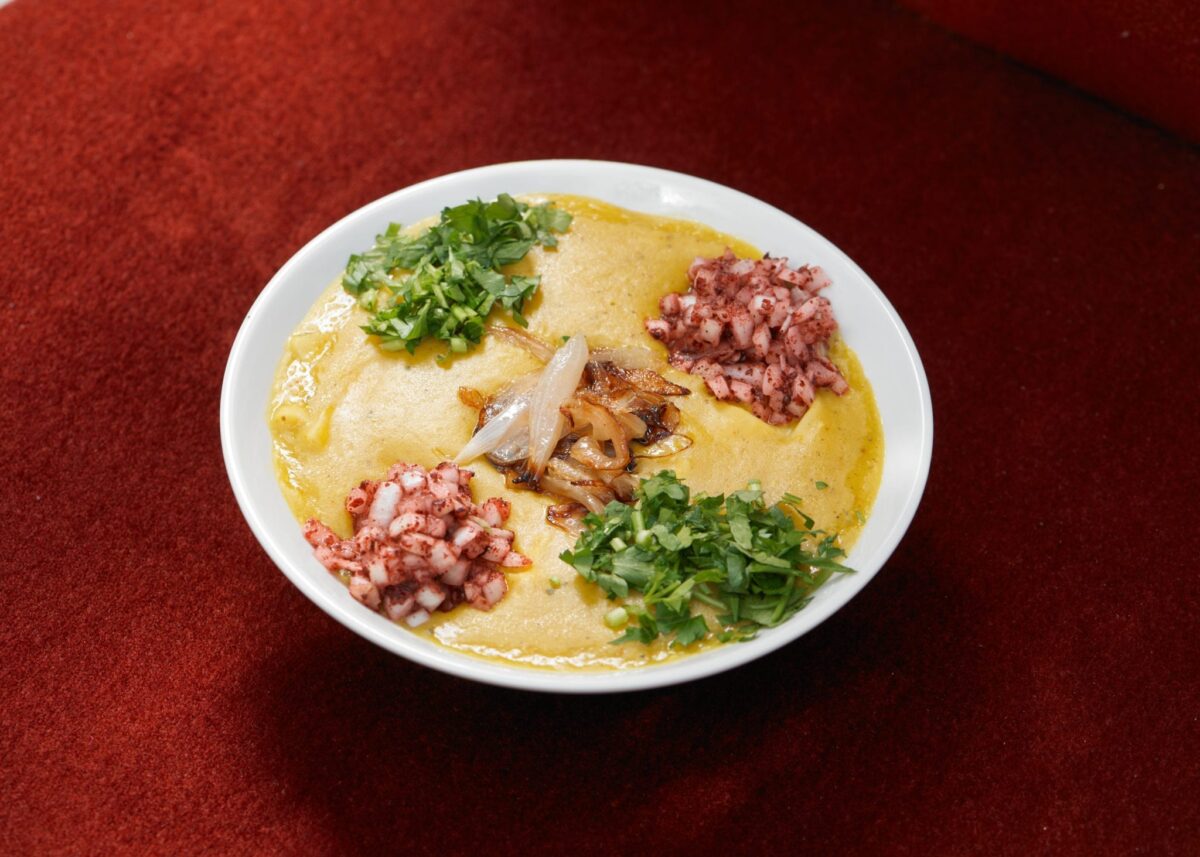
I thought that, with all those visits, as a young journalist, to bombed Beirut, to sieged Tripoli, to Rafah in Gaza, to misery refugee camps, to Nabathiye, to Jericho, to all those tragic examples of Israeli-Palestinian circle of conflict…I thought I had seen it all. Watching the latest news, I recognize that I have not seen the end of it…this time, blood and violence flow through the streets of Tel Aviv, buildings crushed in Gaza’s ghetto, in yet another circle of attacks and retaliation, this time with the end probably predictable, but with the wider human and political map of the region unpredictable. Like many times before, I stand speechless, not understanding how brutal sadistic massacres and throat slaughtering could advance the notion of freedom and statehood, just as I remain voiceless knowing that this latest round of conflict will surely reshape the entire region in a way not seen since the times of Ottomans and Lawrence of Arabia.
Not without some personal disappointment and depression, switching of the broadcasting news, I remembered an episode from many years ago. Someone mysterious, someone who probably followed my traces over the Middle East wars and conflicts, someone with a hunch about what guides me and directs me, someone interested and amused by my efforts to try to find a way between extremes, to navigate between opposites and to understand each side… well, someone alike, sent me a recipe book!
Not just any recipe book, but Palestinian and Jewish recipes for peace! Indeed, “Palestinian and Jewish Recipes for Peace – the perfect gift, food for the table and food for peace.” Scrolling through pages, it was obvious that the book is not only about the dishes and recipes… in the full range, from appetizers to cakes, passing through the generations of two communities… but rather a book full of stories of mothers and fathers and grandparents of Palestinian and Jewish origin, who gathered in a joint peace group in some small Californian town, far from the Middle Eastern hot potato, to share recipes, to cook together, in a way using culinary setting for dialogue of acquaintance and reconciliation. In a way, the opening sentence tells everything: “Feeling that the enemy is the one whose story we haven’t heard, we want to testify that by sharing food and our personal stories, we can strengthen our relationships, and that is exactly what is missing in the peace process.”
The enemy is the one whose story we haven’t heard! What a lecture, what a message even for combating fighters of today! Since, in general, both communities are still not ready to listen to the other side of the story, in contrast to that group of Palestinians and Jews in a small Californian town, sharing their stories and recipes to better understand each other and to avoid living the vicious circle of intolerance and hate.
Thinking about all this, I wandered years back when I discovered the true dangers of prolonged rifts and irreconcilability for the first time and when, also for the first time, I witnessed the attempts to build the bridges, to listen to the other side of the story.
It was in the early eighties – we started from Damascus, then to Amman, then to Beirut, then Jerusalem… a group of journalists, about fifteen of us, along the paths of the Middle Eastern splits, partially under the umbrella of the United Nations, partly connected by the rope of “Journalists for Peace,” participating in powerless and unimportant simulations of mediation, forums, visits to universities, talks to ministers, trying to spread understanding between the parties who did not want to understand each other. There were quite a few well-known journalists, big sharks from the big media outlets among us, so that the whole endeavor did have some weight…well, for the rest of us, less experienced, as myself at the time, it offered the opportunity to see and sense a simple thing: relations in politics are equal to relations between people – it is difficult to be a good person if you are not good to other people. The rest is just a matter of performance – from harmony when it works, to peaceful separation when it doesn’t, waiting for a better moment. Just like Palestinians and Israelis, still today, decades later.
The American Colony hotel was unavoidable iconic place for those types of meetings – one of those places in the war and espionage zones where only Humphrey Bogart would be missing, murmuring at the bar. The rest of the visitors, apart from us journalist, were idle rich man’s sons, traders, conspirators, arms dealers, in the corner someone was singing sad ballads about failed love…
Well, there they brought us to sit to drink and to talk. Discuss the Middle East crisis and ways out.
White wicker chairs arranged in a circle as if for some psychiatric group therapy. I remember well the participants from both Israeli and Palestinian side, as on that afternoon at the American Colony hotel, I first saw Amos Oz and Yossi Sarid and Yasser Abed Rabbo.
Oz was already the greatest Israeli writer and leading intellectual, Sarid was already an open advocate of peace with the Palestinian side, Rabbo was Arafat’s spokesperson, he would become an adviser and minister later. All three in their late thirties. Topic: how to overcome divisions and confrontations, separation and hate.
But what I remember most was the fact that all three have gone full circle – from soldiers and participants in wars and mutual hostility to advocates of reconciliation and peace.
At that time, Amos Oz left behind the times when he served in the army and dusted the border with Syria, raced through Sinai in a tank in the Six-Day War, served on the Golan. Now, he was among the first to advocate a peaceful solution to the conflict, now he shaped the political philosophy of peace and understanding. Once he said it directly: one needs to learn to remember without hatred. Later, he will write the book “How to cure a fanatic” as evidence of how persistent the virus is and how difficult it is to cure it. In short, full circle, from warrior to peacemaker.
Yossi Sarid had a similar, almost identical story. Like everyone else, he had served in the army and served in the wars – but by now, as we were assembled at that terrace of the American Colony hotel, he was already a member of parliament and already known as the most ardent advocate of a peaceful solution, a champion of the theory of separation in order to enable reconciliation – which would later become known as a “two states solution” – convinced that any renewal of wars cannot bring peace to anyone, regardless who would “win”.
Yasser Rabbo, the third one and the youngest of them just completed his high school studies, skinny and bony, with a short beard a la Trotsky, a similar story… at first, youth days in the refugee camp, ardent, a fanatic, and red as the Russian revolution, sharpened for battle… and now, there he was, among us, innocent and powerless journalist-reconcilers, another advocate of peaceful solution, peaceful separation and neighborly reconciliation.

Three men, one circle. What changed them, I wondered. I didn’t know then. Today I know. They realized that the enemy was the one whose story they hadn’t heard. The gift book helped.
Instructive lessons from three men in the white wicker chairs on the terrace of the American Colony hotel. Utopia? Maybe. But it clearly left the mark. Lessons learned stayed with me for years until today: learn not to hate. Even as the broadcasting news testify that blood is still overriding words.
Later, in the early evening, we headed down to Agrippa Street in search of dinner and a glass of conversation. I don’t remember the place anymore, but I remember the sight of table full of small bowls of tabbouleh, falafel, shawurma, thin and hot stuffed pies, glasses of cold water with mint leaves, carrots sliced lengthwise soaked in lemon juice, kefta, hummus… endless kaleidoscope.
At one moment, they served something like a greenish-white mush. I have never seen something alike before, neither in Syrian, Lebanese or Turkish cuisine. Smat, it is smat, clarified someone. Yes, it could also be ihshtaye, added someone else. Yes, also mammade, or msalwaea, flow of names went on.
But the point was that it is a dish of both Palestinian and Jewish culinary traditions, connected with prayer and hope and the fulfillment of wishes, so Palestinian and Jewish women prepare it for family, neighbors and friends when someone’s wish comes true.
In fact, very ordinary but unusual dish. Lentils, pasta and – persistence. Smat is based on lentils, usually red or yellow, which gives the spread a special color. The strange part of the preparation is that lentils are cooked with pasta, with constant stirring, for hours, persistently, until everything is completely boiled down into a thick porridge, mixed with salt, cumin, cardamom, sumac, and a bit of lemon juice. Smat, persistence to achieve trust and reconciliation.
Remembering that gift book, “Palestinians and Jewish Recipes for Peace,” I still believe in persistence to learn how not to hate. Despite watching the latest broadcasting news, not without depression and disappointment, I see that, again, blood is spilled over the smat.
SERIAL: DIPLOMACY AT THE TABLE
This serial is based on the intriguing book “Diplomacy at the Table,” written by the Croatian diplomat Hidajet Biščević, who reviewed and edited the original manuscript and selected the most interesting records, especially for our magazine. His Excellency, Mr. Biščević, is the ambassador of the Republic of Croatia to Serbia. He lives with his family in Belgrade.